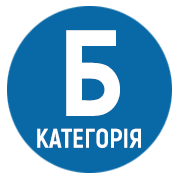METHODS OF STUDYING THE SEMANTICS OF PROGRAMMING LANGUAGES BY THE STUDENTS OF PROFESSIONAL EDUCATION INSTITUTIONS
DOI:
https://doi.org/10.25128/2415-3605.23.1.23Keywords:
educational process; programming language semantics; methodological system; professional educationAbstract
The article shows that in institutions of professional (vocational and technical) education, the inclusion of a block of questions devoted to the semiotics of programming languages into the content of learning languages and programming methods will contribute to the successful implementation of the system of their fundamental training in the subject field «Information Technologies». The methodological system of education, built within the framework of the methodologicalical theory, helps students acquire knowledge and skills in the semiotics of programming languages. The main theoretical and methodological provisions are outlined, on the basis of which a methodical system of teaching the semiotics of programming languages and a metamodel of the teaching method itself in the form of a methodical theory have been built. On the basis of the classification of models of syntax and semantics of programming languages, carried out to build a conceptual basis for the methodological theory of teaching semiotics of programming languages, there have been selected the following sections for teaching semiotics of programming languages: formal syntax of programming languages; meaningful operational semantics of programming languages; formal operational semantics of programming languages; formal deductive semantics of programming languages; denotational semantics of programming languages. At the stage of selecting the content of the elements of the model of the methodical system for teaching the semiotics of programming languages, the central place is occupied by the problem of setting learning goals, since the selection of the content of other elements is aimed at achieving the set goals. Semiotic educational models include a system of tasks, in which the subject area of activity is developed within the framework of specific teaching methods, which involve textual statements of educational problems or tasks. The goals and content of learning the semiotics of programming languages, largely influencing each other, determine the choice of teaching methods for the section in question. For example, when considering the last block of learning content, there has been chosen a simulation or social learning model, which provides for the student’s assimilation of new information, as well as attempts to get involved in the situation of solving professional tasks based on it.
References
Андон П. І., Лавріщева К. М. Розвиток фабрик програм в інформаційному світі. Вісник НАН України. 2010. № 10. C. 15–41.
Аронов А.О., Дзюбенко А.І. Підхід до створення студентської фабрики програм. Проблеми програмування. 2011. № 3. С. 42–49.
Базурін В. М. Порівняльний аналіз середовищ програмування мовою Python. Новітні комп’ютерні технології. Кривий Ріг: Видавничий центр ДВНЗ «Криворізький національний університет», 2018. Том XVI. С. 281–292.
Глушков В. М. Фундаментальные основы и технология программирования. Программирование. 1980. № 2. С. 13–24.
Баранюк О. Пошук шляхів підвищення ефективності вивчення мови асемблера. Наукові записки. Серія: проблеми методики фізико-математичної і технологічної освіти. Кіровоград: РВВ КДПУ ім. В. Винниченка, 2011. Вип. 2. С. 18–26.
Лавріщева К. М., Коваль Г. І., Бабенко Л. П. та ін. Нові теоретичні засади технології виробництвасімейств програмних систем у контексті генерувального програмування. Київ: ІПС НАНУ, 2011. 377 с.
Федусенко О. В., Федусенко А. О., Доманецька І. М. Концептуальна модель адаптивної інформаційної системи навчання. Інформаційні технології управління. 2017. № 32. С. 86–90.
Цюцюра М.І., Єрукаєв А.В. Застосування генетичного алгоритму для формування функції належності нечітких множин. Інформаційні технології управління. 2018. № 36. С. 71–75.
Chang C.C. A division algorithm using bisection method in residue number system. International Journal of Computer, Consumer and Control. N 1. 2013. P. 59–66.
Porter R. Design Patterns in Learning to Program: A thesis … for the degree of Doctor of Philosophy. Adelaide, 2006.
Winslow L. Programming Pedagogy: A Psychological Overview. SIGCSE Bulletin. 1996. Vol. 28. No. 3. P. 17–22.






